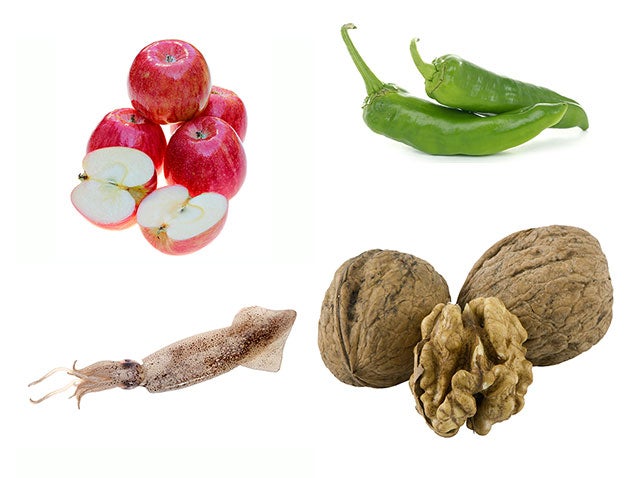Autumn’s Best Harvest to Table Road Trips
Sure, apples are standard u-pick fare, but we’ve also gone a bit off the farm with this list. Why squid? We picked it for the thrill of it, for some varied autumn texture and flavor, because an outstanding chef said he’d offer us an exclusive recipe, and as an ode to our favorite forager and gourmand, Steven Rinella. After all, the draw to local food is not just knowing where it comes from, but actually being where it is so you can search it, pluck it, pull it, and then haul it home for a little culinary experimentation. After you’ve tried the following four ingredients and recipes, find something yourself by browsing J. Blake Plemmer’s list of family farms, ripe for a go at .
Rocky Mountain High Roast
Harvest green chiles, then make a rippin’ salsa, using a recipe from our favorite skier-turned-chef
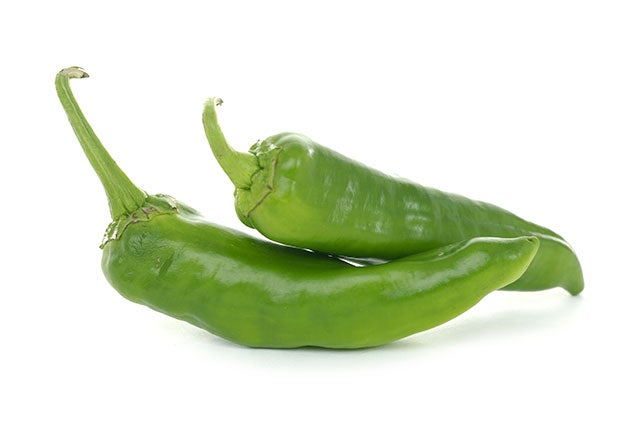
WHERE: , Paonia, Colorado
WHY: Go for the green chile. Stay for the live music. Though green chiles are more closely aligned with New Mexico–where the distinctively autumn smell of roasting wafts from backyard grills and grocery store parking lots–Colorado chiles are just as aromatic, plus at Delicious Orchards you can also pluck pears and apples from the vine (while they last). Now and until the first freeze, you can pick your own Anaheim chiles ($2/pound). Try the farm specialty, green pork chili, at the onsite café and wash it down with the hard cider on tap in the farm’s tasting room. If too much of the hard stuff goes down too easy, stay overnight at the farm’s campground ($10 per night).
HOW: You can have the farm staff roast your chiles, but roasting them on your own backyard grill will make the neighbors green with food envy.
GET THERE: From Denver, it’s a 4-hour drive. Head East on I-70 for 140 miles and then south on Highway 82 toward Carbondale. After 12 miles, hang a right on Highway 133. Continue south for an hour, through Paonia, to the farm.
That’s 39126 Highway 133, Hotchkiss, CO, 81419, if you favor Google Maps instruction.
HOURS: 9am-6pm, every day.
DO IT RIGHT: Down the road at Holy Terror Farm in Paonia, extreme skier turned farmer makes a mean GREEN CHILE TOMATILLO ROASTED SALSA. ��
2 green chiles (aneheim or poblano)
1 pound husked tomatillos
3 garlic cloves – skin on
1 onion, husked, cut in quarters (keep ends on to hold them together on grill)
2 teaspoon salt
Handful of cilantro (optional)
Roast all ingredients except the cilantro on a BBQ grill over medium heat
Turn each ingredient until each is slightly blackened on all sides
Remove chile stems and garlic skins (For other dishes in which the chiles are not blended, you’d remove the chile skins as well, because in those cases it proves difficult to eat
Blend everything, including the cilantro, in a food processor or blender
Pulse until it is as thick or thin as you like
Superior Apple Picking
Eat a few off the tree, and take the Northwoods home with this autumn-themed bread pudding
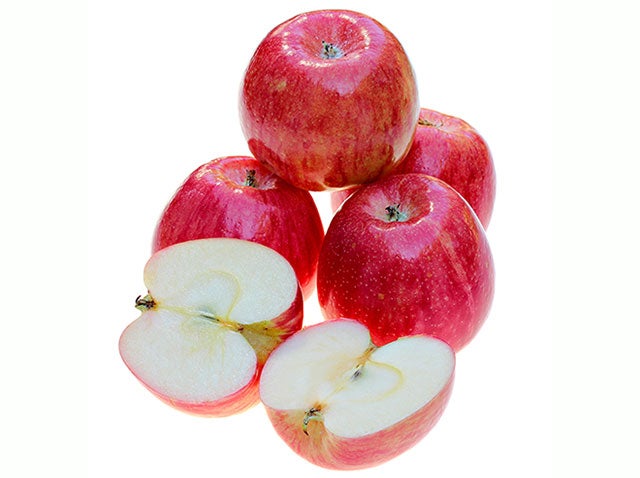
WHERE: in Leicester, North Carolina
WHY: The black walnut tree has a wide range across the eastern half of the country, but the nut’s intense, sweet, but bitter flavor has a home in the southern Appalachian palate. Plus, the Long Branch Environmental Center is more than a u-pick farm, it’s a feel-good farm. The conservatory, which boasts 1,600 acres of wilderness and farmland, started in 1974 as an ecological sanctuary and land trust. It offers waterfalls, solar energy demonstrations, and hiking trails up to 5,152-foot summit Big Sandy Mush Bald. Aside from all that goodness, and the greatness of the walnuts ($5/pound), you can pick chestnuts, raspberries, and blueberries, while they last.
HOW: The husked nut drops from the tree when ripe, so collect yellow-green pods from the ground. When you get home, armed with sturdy rubber gloves to keep the juglone (walnut juice) from staining your hands, cut away and remove the outer husk with a paring or pocket knife. Or, as many seasoned walnut pickers do, simply toss the husked nuts on the driveway and let your car do the dirty work. Once the husk is free, let the shelled nuts dehydrate in a dry, squirrel-free zone for days to weeks. The longer you wait the less rubbery the meats become. Remove the meats from the shell using a vice or a hammer. Find here.
GET THERE: The environmental center is open for visitors any time, but harvests must be done appointment only. No exceptions. Contact Paul Gallimore at watershed.keeper@gmail.com to arrange a visit and get directions. The farm is a 3.5 hour drive northeast from Atlanta. You’ll take I-985 N/US-23 N through the Chattahoochee National Forest, but ask Gallimore for detailed directions to the farm.
DO IT RIGHT: , of The Market Place and The Frog & Owl Café, has been called the godfather of the local food movement in Western North Carolina for his knack for teasing out Appalachian flavors and tastes. Here’s a recipe for his delectable BLACK WALNUT PESTO, which you can slather onto a grilled brushetta with a zesty herb such as arugula or an Asian mustard green.
1 cup fresh basil (leaves only)
1/4 cup broad leaf parsley (leaves only)
2 cloves fresh garlic
1/2 tsp. salt
zest of one orange
1/2 cup black walnuts
1/8 cup blanched almonds
1/4 – 1/2 cup walnut oil, as needed
Pick leaves of basil and parsley. Crush garlic on the salt. Add herbs, garlic, salt, orange zest, black walnuts, almonds to the bowl of a food processor (or powerful blender). Turn on medium speed and slowly pour walnut oil into the processor, puree until smooth. Refrigerate.
Use as you would pesto made with pine nuts. Rosenstein suggests serving with a sauvignon blanc from the Loire or a malty high gravity beer.
Puget Sound Jigging
Catch some squid and serve it up in a blast
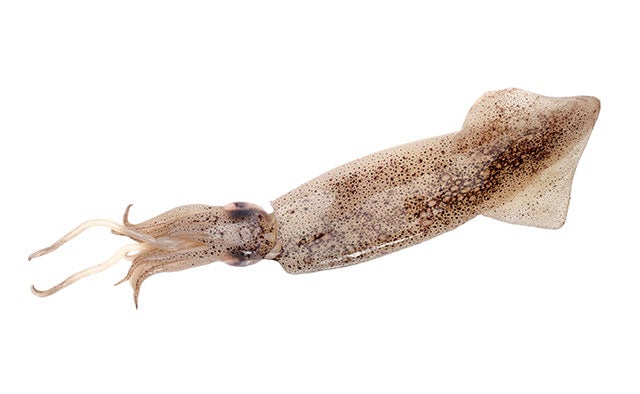
Blasted Squid
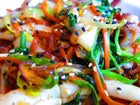 Blasted Squid
Blasted SquidWHERE: Public piers throughout Puget Sound, but the Edmonds Pier, north of Seattle in best now through November. (During winter months, try public piers in Seattle and south to Tacoma.)
WHY: Mythically large squid sometimes ply the waters of the Puget Sound, but there is no commercial fishery here, leaving DIY as the only option for eating local cephalopods. Plus, the bar of entry is low: with only a cheap fishing rod, some line, lures called jigs, and a bucket, you’re allowed to snag up to 10 pounds of Loligo Opalescens, or Market Squid, per night. Seattleites, especially Japanese, Filipino, and Vietnamese immigrants, were foraging these small (8 to 10 inch) squid for decades before “local food” was a thing.��
HOW: Since it’s fall in the Pacific Northwest, you’ll want a warm beverage in a thermos, a raincoat, and rain pants. With any luck, you’ll be covered in squid ink, which will easily wash off rain gear. You’ll need a ($11.35 for a day or $16 for an annual pass, minus Dungeness crab), which you can buy with the jigs (starting at $5; you add up to four on a line) and other gear at Linc’s Bait Shop in Seattle (501 Rainier Ave. S.; 206-324-7600). Sink the jigs and keep them moving until you feel the tug of a squid grabbing that bait. Once out of the water, the squid should loosen its grip. Remove it from the hook and store it in a bucket. To prepare, cut the squid at the mantle and remove its head, organs, and outer film. You’ll eat the body and the arms.
GET THERE: From Seattle, head north to the Edmonds-Kingston ferry and spend the day or weekend exploring the Olympic Peninsula–hike the restored landscape around the newly free-flowing Elwha River–or jump on a second ferry in Port Townsend and explore the San Juan Islands by boat and bike. Save squidding to punctuate the return journey. The public fishing pier in Edmonds is just south of the ferry terminal, off Admiral Way.
HOURS: Plan to be out under the cover of night. The best window is two to three hours before high tide. The squid are attracted to light, so choose the best-lit areas and scan the water for passing schools. Squid ink on the deck indicates a prime spot.
DO IT RIGHT:�� Seattle chef Kevin Davis, whose eateries and are bright lights in the local and sustainable seafood scene, whipped up this BLASTED SQUID dish just for us. This makes one large entree that, when served with steamed white rice, will serve two.
6 ounces fresh squid, cleaned and separated
3 ounces clarified butter (ghee)
1 teaspoon garlic, minced
1 teaspoon shallot, minced
1 teaspoon ginger, minced
1 teaspoon serrano pepper, seeded and minced
1/4 cup shitake mushroom caps, stem remove, julienned
1/2 teaspoon black pepper, freshly ground
1/2 cup leeks, julienned
1/2 cup carrots, julienned
1/4 cup onion, julienned
1/4 ounce cilantro, picked
4 ounces Thai basil leaf, picked
4 ounces chicken stock, chilled
2 ounces soy sauce
1 teaspoon cornstarch������
1 teaspoon lime juice, freshly squeezed
1 tablespoon scallion tops, extreme bias
1 teaspoon sesame seeds, toasted��
Heat 1 oz oil to smoking, season squid with black pepper. Sauté squid briefly. Remove from pan. Says chef Davis: “This is where the blast comes in. Get the oil really hot, remove pan from heat, tilt the pan forward and add the squid to the dry side of the pan,��level the pan and spread out the squid and��sauté with the residual heat just��until the tentacles curl, approx 30 seconds.”
Add remaining oil followed by mushrooms leeks, carrots, onion, garlic, ginger, shallot and serrano pepper, sauté until tender�������������������������� ����������������������������������������������������������������������
Mix cornstarch, chicken stock, soy sauce, lime juice with a whisk to form slurry ��
Add to pan and bring to boil stirring constantly until mixture is thickened slightly��
Return squid to pan and reheat briefly������������������������������������������������������������������������������������������������������
Plate in a warm bowl and garnish with scallions and sesame seeds��������������������������������������������������������������������������������������������������������������
Enjoy with a fine Seattle microbrew, say the from Seapine Brewing Company.


